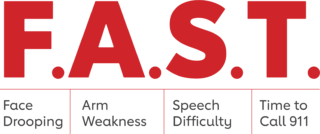 Stroke can happen to anyone, regardless of age or fitness level. But the local branch of the American Stroke Association, a division of the American Heart Association, is taking action to change that.
Stroke can happen to anyone, regardless of age or fitness level. But the local branch of the American Stroke Association, a division of the American Heart Association, is taking action to change that.
Oct. 29 is World Stroke Day, and the American Stroke Association is using the day to announce the return of an-person event that fights stroke and cardiovascular disease.
CycleNation, a relay-style, stationary cycling event, will take place on Thursday, Dec. 2, from 4 to 8 p.m. at Carbone Athletics at the Fitness Mill, 1707 Oriskany St. W. in Utica. Registration will begin at 4 p.m., and cycling will take place between 5 and 7. People can register at CycleNation.org/Utica, form a team to cycle, and fundraise $5,000 to fight stroke and heart disease in the Mohawk Valley.
Dr. Scott Brehaut, Director for Stroke and Neurocritical Care Services at Mohawk Valley Health System, will be one of the celebrity riders at CycleNation.
“Strokes can happen to anyone,” Dr. Brehaut said. “We all need to know the warning signs and what to do because you never know when you’ll need to help yourself or someone else having a stroke. CycleNation will provide people with the information they need to prevent or respond to a stroke, as well as raise money so the American Stroke Association can continue to fund the research that will save lives right here in the Mohawk Valley. Also, people who participate will improve their health that evening. I’m proud and honored to be one of the celebrity riders.”
Each year approximately 800,000 people in the U.S. suffer a stroke. Worldwide, one in four will suffer a stroke in their lifetime. Knowing stroke warning signs and seeking immediate medical attention can make the difference between recovery and disability or death.
The American Stroke Association encourages people to learn the acronym F.A.S.T. to help them remember the warning signs for stroke. F.A.S.T. stands for:
- Face Drooping – Does one side of the face droop or is it numb? Ask the person to smile. Is the person’s smile uneven?
- Arm Weakness – Is one arm weak or numb? Ask the person to raise both arms. Does one arm drift downward?
- Speech Difficulty – Is speech slurred? Is the person unable to speak or hard to understand? Ask the person to repeat a simple sentence like “The sky is blue.”
- Time to Call 911 – If someone shows any of these symptoms, even if the symptoms go away, call 911 and get to a hospital immediately. Check the time so you can tell emergency responders when the first symptoms appeared.
Research shows that while most people say they would call 911 in a stroke emergency, real-world data shows that up to 75% of those experiencing a stroke first called friends or family.. Strokes are most treatable right after they happen. Delaying getting help often means people can’t get treatment in time and are more likely to be disabled or die from their stroke.
Along with learning stroke warning signs comes another important message from the American Heart Association and American Stroke Association: Don’t Die of Doubt.
“If you or someone around you shows signs of stroke, get it checked out right away. It’s always better to err on the side of caution with stroke signs because you’re losing brain cells every minute during a stroke,” said Dr. Brehaut. “Remember that even during a pandemic, hospitals are still the safest place for you to be when medical emergencies strike. Please let us help you—don’t die of doubt.”
Many strokes are preventable and managing blood pressure—the leading cause of strokes—is a big step in the right direction, Brehaut said. Nearly 50% of all adults in the U.S. have high blood pressure, and almost three out of four (74%) people with high blood pressure do not have it under control.
In addition to managing blood pressure and more traditional risk factors like diabetes and AFib, the American Heart Association and American Stroke Association emphasize the importance of managing chronic stress. Elevated stress hormones have been linked to high blood pressure and increased risk for stroke and heart events. Constant or chronic stress can also open the door to unhealthy behaviors like poor eating, drinking too much alcohol and smoking.
Learn more and test your stroke knowledge at stroke.org/warningsigns.